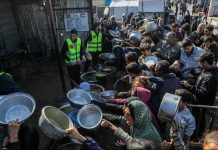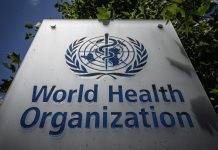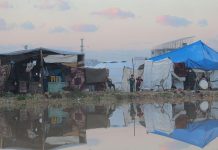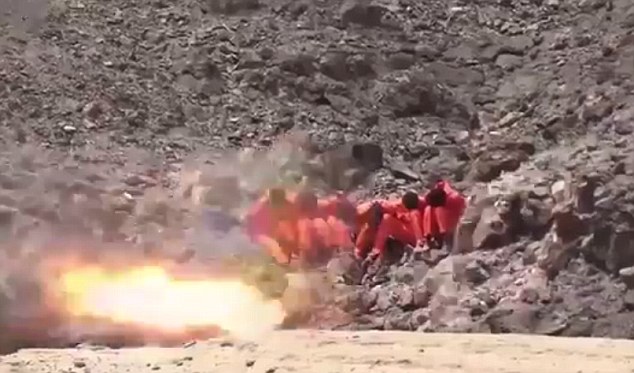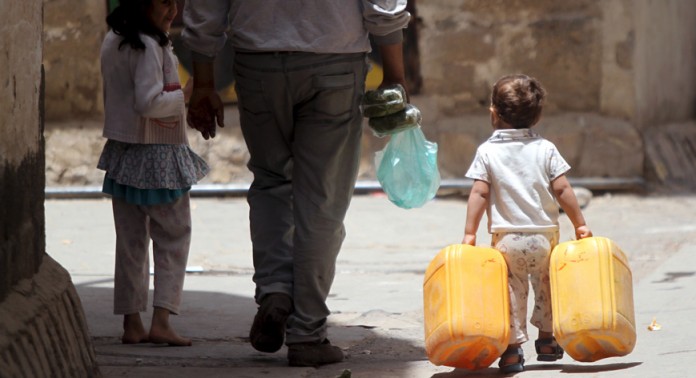
By Jason M. Breslow
One year ago, Secretary of State John Kerry was asked if Yemen was about to become a failed state.
“We don’t have an assurance yet,” Kerry told reporters in Sri Lanka. “I would not yet say that the verdict is in on what Yemen is going to be.” If peace negotiations could begin, he said, “then it obviously has the opportunity to hold itself together.”
In late April, peace talks began, but on Sunday the United Nations’ Special Envoy for Yemen announced that the government of Yemen had suspended its participation.
The apparent breakdown in negotiations has left Yemen teetering on the brink of collapse.
Since war broke out last year an estimated 2.8 million have been displaced from their homes. More than 6,400 people have been killed, and over 30,500 wounded. According to Amnesty International, more civilians have died from airstrikes by an international coalition being led by Saudi Arabia — which entered the conflict in March 2015 — than from any other cause.
The fighting has touched nearly every aspect of daily life in Yemen — limiting access to food and water in one of the world’s most food insecure and least developed nations; deepening poverty; devastating access to medicine and health care; and forcing millions of children from school.
Poverty and Hunger
Yemen has always been among the world’s poorest nations, and more than a year of war hasn’t helped. “The country’s economic and social fabric is crippling after one year of conflict,” the World Bank recently wrote, noting that Yemen has the highest incidence of poverty in the Middle East. In all, about 37.3 percent of the population now lives below the poverty line of $2 per day.
In 2015, the nation’s economy shrank a staggering 28 percent, as fighting wrecked infrastructure, stalled imports and forced countless businesses to close. That’s exacerbated poor living conditions across Yemen, leaving more than 21 million people, or roughly four-in-five Yemenis, in need of emergency humanitarian assistance. More than 19 million are without safe drinking water or sanitation, and another 14.4 million are facing chronic food insecurity, which has increased by 35 percent since the start of the conflict.
A Health Care Crisis
Health care has similarly suffered, as a naval blockade by Saudi Arabia has caused shortages of medical supplies and staff, and hospitals have been targeted by forces on both sides of the conflict.
The aid organization Medecins Sans Frontieres (Doctors Without Borders), for example, experienced at least three separate attacks on its medical facilities in Yemen between October and January. The attack in January on Shiara Hospital in Northern Yemen killed six and injured at least seven. The U.N. has said at least 63 medical facilities have been attacked in all. Nearly 600 health facilities have closed due to damage, shortages of critical supplies or lack of health workers.
“Whether for routine health check-ups and mild conditions, chronic illnesses that require regular and specialized follow-up, or emergency treatment due to the violent effects of the war, it is becoming increasingly difficult for people to access the services they need,” Doctors Without Borders wrote in August.
In the city of Taiz, the nation’s third largest city, Doctors Without Borders documented 14 separate attacks on just one facility from April to June 2015.
With Taiz currently gripped by a siege, even necessities like oxygen, which is needed for putting patients under general anesthesia, are in short supply. An estimated 400,000 residents have fled the city, and according to Amnesty International, as of February, just four hospitals remained open. Between them, they were sharing somewhere between 20 to 30 cylinders of oxygen. Doctors told Amnesty that at least 18 people, including five children, died due to the lack of oxygen.
The Toll On Children
For Yemen’s children, the violence has had an especially pernicious effect. Between March 2015 and March 2016, more than 900 children were killed in the fighting and 1,300 were injured, according to UNICEF.
Warring parties have also recruited children to join the fighting. In 2015, the United Nations documented 848 cases of child recruitment, with reports suggesting that children as young as 10 were pulled into battle.
But the UNICEF called such statistics just “a tip of the iceberg.” Nearly 3,600 schools have closed, bringing the total school-age population that is out of school to more than 3.4 million. That’s half of all school-aged children in the country. At least 51 attacks on education facilities in Yemen have also been verified.
Simply put, UNICEF said, “the scale of suffering in the country is staggering.” For children, it warned, the physical and emotional violence “shatters their world … Many will carry these heavy emotional burdens into adulthood.”
(Source: PBS)







